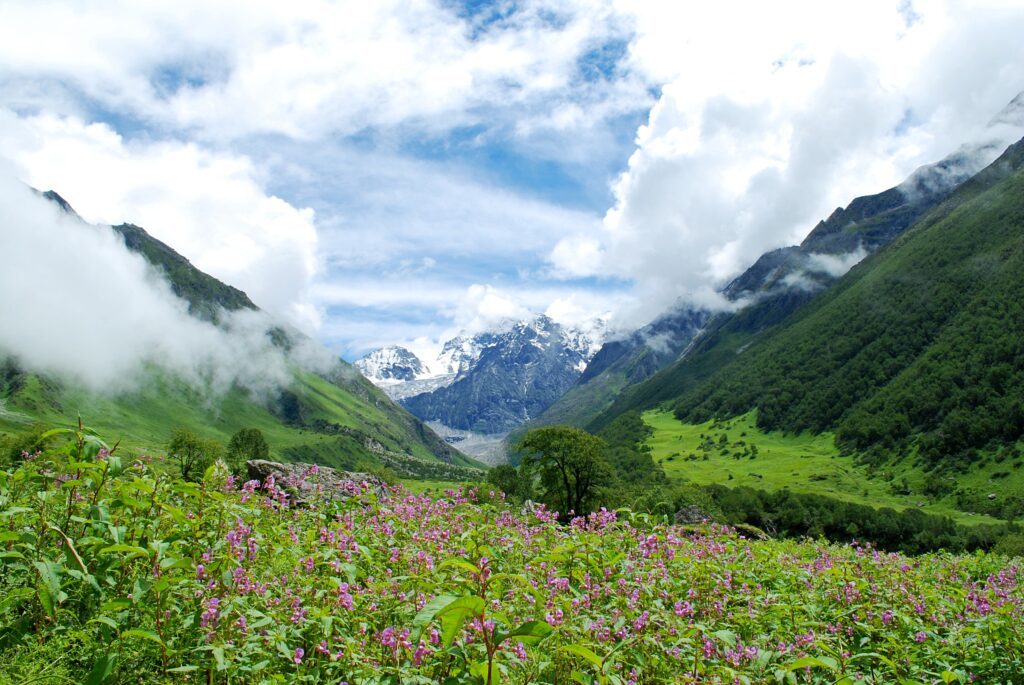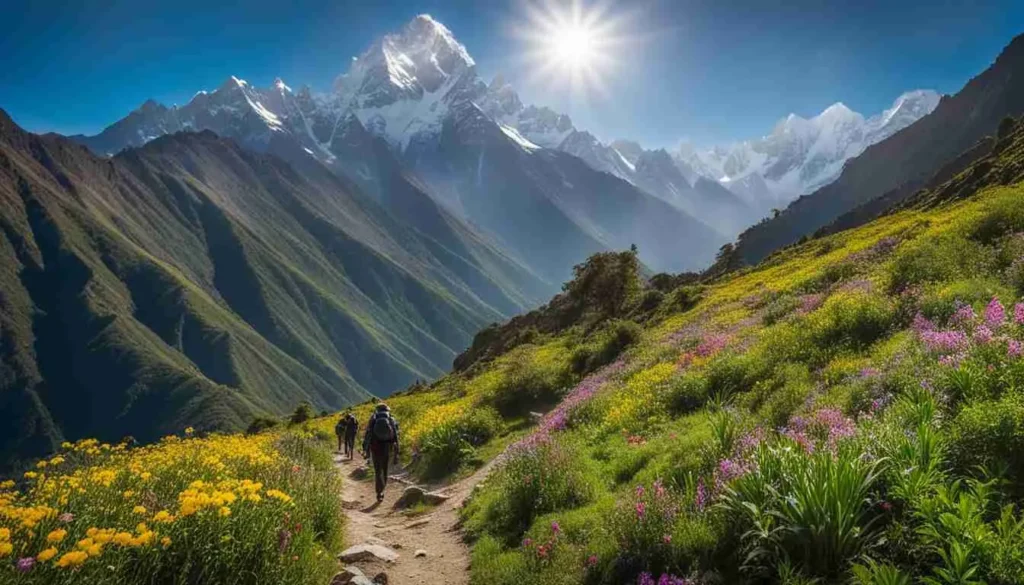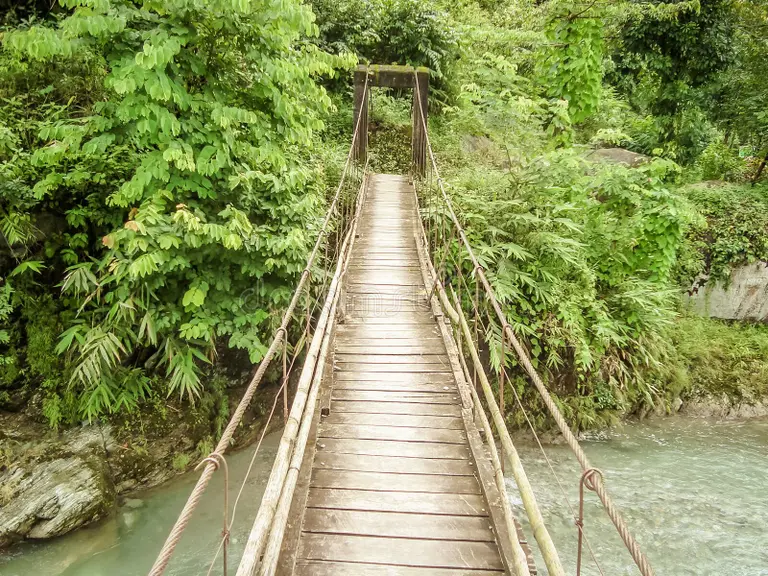Blogs
1. Trek into Color: The Ultimate Guide to Valley of Flowers, Uttarakhand

Introduction: A Blooming Paradise in the Himalayas
Hidden in the Western Himalayas of Uttarakhand, the Valley of Flowers is a breathtaking destination known for its vibrant meadows, spiritual aura, and untouched natural beauty. Recognized as a UNESCO World Heritage Site, it bursts into a sea of colors every monsoon, showcasing over 500 species of wildflowers at an altitude of 3,600 meters.
Discovered accidentally in 1931 by British mountaineer Frank Smythe, the valley spans 87 square kilometers and is part of the Nanda Devi Biosphere Reserve, one of India’s most pristine protected areas. Reaching this floral wonderland is an adventure in itself, beginning at Govindghat, passing through Ghangaria, and continuing with a 6 km trek into the valley.
Along the trail, travelers encounter cascading waterfalls, alpine forests, and rare flowers like Brahma Kamal, Blue Poppy, and Cobra Lily. The valley is also home to unique wildlife, including the snow leopard, musk deer, and Himalayan monal.
Beyond its visual charm, the valley holds deep mythological significance—believed to be the site where Hanuman found the Sanjeevani herb in the Ramayana. For trekkers and nature lovers alike, it’s a soul-refreshing escape into nature’s untouched masterpiece.
Where is the Valley of Flowers Located?
Base village for trek: Govindghat
Nearest town: Joshimath
Nearest railway station: Rishikesh
Nearest airport: Jolly Grant Airport, Dehradun

The Trekking Experience
Reaching the Valley of Flowers is as enchanting as the destination itself. The journey begins at Govindghat, a small town that serves as the base village for the trek. From here, a 14 km trek (split across two days) leads to the serene hamlet of Ghangaria, the last human settlement before entering the valley.
The trail winds through alpine forests, wooden bridges, gushing rivers, and mist-covered cliffs, offering ever-changing views that feel like scenes from a dream. Along the way, trekkers encounter cascading waterfalls, occasional snow patches (especially early in the season), and a crisp mountain breeze filled with the scent of wild herbs.
After an overnight stay at Ghangaria, the final 6 km trek takes you into the Valley of Flowers National Park. This stretch is filled with colorful blooms, curious butterflies, and panoramic views of snow-draped peaks. The trail is moderately challenging but incredibly rewarding, making it suitable for nature lovers, amateur trekkers, and photographers alike.
Whether you’re trekking solo, with friends, or on a guided tour, every step feels like a spiritual walk into nature’s finest art gallery.
Quick Trekking Stats
- Distance: ~17 km (from Ghangaria to Valley of Flowers and back)
- Elevation Gain: 750–800 meters (approx.)
- Max Altitude: 3,658 meters (12,000 feet)
- Duration: 6–8 hours (round trip from Ghangaria)
- Difficulty: Easy to Moderate.
What Makes Valley of Flowers Special?
Imagine walking through a valley covered in thousands of wildflowers — blue poppies, orchids, marigolds, and more. The Valley is also home to:
- Rare flora & fauna
- Glacial rivers and waterfalls
- Snow-capped Himalayan peaks
- Endangered species like the blue sheep and Himalayan musk deer
Birdwatchers, botanists, and nature photographers absolutely adore this valley!
Best Time to Visit
Mid-July to Mid-August – Peak flower blooming season

Conclusion: A Dream Trek for Nature Lovers
If you’re someone who finds joy in flowers, towering mountains, and the crisp purity of Himalayan air, then the Valley of Flowers is your calling. This isn’t just a trek—it’s a soulful escape into one of nature’s most divine masterpieces. Every step through this blooming valley feels like walking through a living painting, where time slows down and worries melt away. Whether you’re an adventure seeker, a spiritual soul, or a photography enthusiast, this journey will leave you inspired and reconnected with nature. The Valley of Flowers is more than a destination—it’s an unforgettable experience of peace, beauty, and wonder.
2. Tranquil Trails of Kalimpong: Discover the Hidden Gem of the Eastern Himalayas

Nestled in the eastern Himalayan foothills of West Bengal, Kalimpong is a quaint hill station that charms visitors with its serenity, subtle colonial heritage, and ethereal landscapes. Often overshadowed by the more touristy Darjeeling, Kalimpong is a secret gem where time seems to slow down. Its tranquil trails — both natural and metaphorical — beckon the wanderer to pause, breathe, and immerse in its quiet elegance.
A Soothing Welcome
As you ascend the winding roads toward Kalimpong, the climate gradually shifts — the air gets cooler, the mist begins to hover, and the hills roll out in lush green layers. Kalimpong sits at an altitude of 1,250 meters (4,100 feet), offering moderate weather and breathtaking views of the Teesta River valley on one side and the majestic Kanchenjunga range on the other. The town feels like a painting in motion — sleepy yet soulful, simple yet spellbinding.
What strikes most visitors first is the silence. Not the eerie kind, but the soothing silence of rustling pine leaves, distant monastery bells, and the occasional chirping of Himalayan birds. It is a place that invites introspection, reading by the window, and leisurely walks through fragrant, flower-lined paths.
Nature’s Footsteps: Trails for the Soul
Kalimpong’s natural beauty is best discovered on foot. One of the most loved trails starts from Deolo Hill, the highest point in Kalimpong. A gentle trek up rewards you with panoramic views of the valleys and, on clear days, snow-kissed peaks of the eastern Himalayas. The well-maintained park at the top, dotted with rhododendrons and orchids, is ideal for a picnic or quiet contemplation.
Another serene path leads you to Durpin Hill, home to the Zang Dhok Palri Monastery, built in the 1970s. The walk is steep but short, and the reward is a peaceful monastery overlooking the confluence of the Teesta and Rangeet rivers. The monastery houses rare Buddhist scriptures, and its silence is only broken by the low hum of monks chanting — a spiritual trail for the soul.
One cannot speak of Kalimpong without mentioning its flower nurseries. The town is a leading exporter of orchids, cacti, and gladioli, and a walk through nurseries like the Pine View Cactus Nursery is nothing short of botanical bliss. These trails aren’t wild or untamed — they are neatly curated pathways that celebrate the region’s horticultural heritage.
Whispers of the Past: Colonial Echoes
Kalimpong’s charm also lies in its history. Once a bustling trade hub between India and Tibet via the Jelep La Pass, it was frequented by British officers, missionaries, and Tibetan traders. The colonial remnants still stand tall — Dr. Graham’s Homes, a school established in 1900, is one such legacy. Spread over 500 acres, this institution not only provides excellent education but also offers a scenic walk through time, flanked by ivy-clad buildings and age-old trees.
Nearby, Morgan House, an old colonial mansion now converted into a heritage hotel, adds a layer of vintage elegance to the Kalimpong experience. Surrounded by thick forests and perched on a hilltop, it whispers tales of a bygone era, of horse-drawn carriages and high-tea afternoons.
Cultural Interludes: A Melange of Ethnic Harmony
Kalimpong is home to a unique blend of cultures. Nepalese, Lepchas, Bhutias, and Bengalis coexist peacefully, each contributing their essence to the town’s vibrant yet tranquil identity. Walks through the main market offer glimpses of this cultural potpourri — from momo stalls and handicraft shops to monks strolling in maroon robes and old women selling hand-woven shawls.
One of the most enriching trails you can take is not through hills or heritage homes but through Kalimpong’s spiritual diversity. Visit a Buddhist monastery in the morning, a Hindu temple in the afternoon, and an old church by evening — all within walking distance. Each place, though different in belief, emanates the same sense of peace that seems to be Kalimpong’s very soul.
The Teesta Trail: River of Calm
For those seeking adventure mingled with peace, a day trip down to the Teesta River is highly recommended. About an hour’s drive from the town, the Teesta valley is ideal for white-water rafting, angling, or simply lazing by the riverside with a book. The trail down is flanked by tea gardens, quaint villages, and smiling locals, offering plenty of stops for photography or friendly conversations.
Gastronomic Trails: Simple Yet Satisfying
Kalimpong doesn’t boast luxury dining, but what it offers is wholesome, home-style food with Himalayan warmth. Sample traditional Thukpa, momos, and Phaley (Tibetan bread stuffed with meat or vegetables) from family-run eateries. Don’t miss the local cheese — Kalimpong cheese, soft and tangy, is a legacy from Swiss missionaries and pairs beautifully with fresh bread and fruit.
The Keventer’s outlet and the Gompu’s Hotel & Restaurant are old-world places that serve delicious meals with a side of nostalgia. Here, meals are not rushed; they’re savored — just like everything else in Kalimpong.
Time Stops Here
Perhaps the most tranquil trail of Kalimpong is not on any map. It is the path one takes inward — the way your mind unwinds, your senses awaken, and your soul finds its rhythm in the silence. Kalimpong doesn’t shout for attention; it whispers. It offers you time — to read, to reflect, to breathe. It’s a place where even doing nothing feels meaningful.
The locals, ever gentle and welcoming, are content in their quiet lives. They greet strangers with genuine smiles, help without hesitation, and embody the peace the town radiates. Children walk to school amid blooming flowers, elders sip tea overlooking misty hills, and travelers, if they stay long enough, find a piece of themselves they didn’t know was missing.
Conclusion: A Trail Worth Taking
Kalimpong may not offer the grandeur of other Himalayan destinations, but it offers something far more rare — peace that stays with you. Its trails are not about reaching summits but about discovering serenity. Whether you’re wandering through a pine forest, sitting in a century-old church, sipping tea by a flower-laden balcony, or simply watching the clouds roll in over the hills, Kalimpong makes you feel that all is well with the world.
So, if your soul seeks solace and your heart yearns for silence, pack a light bag and head to Kalimpong. Walk its tranquil trails. And let them lead you home — to yourself.